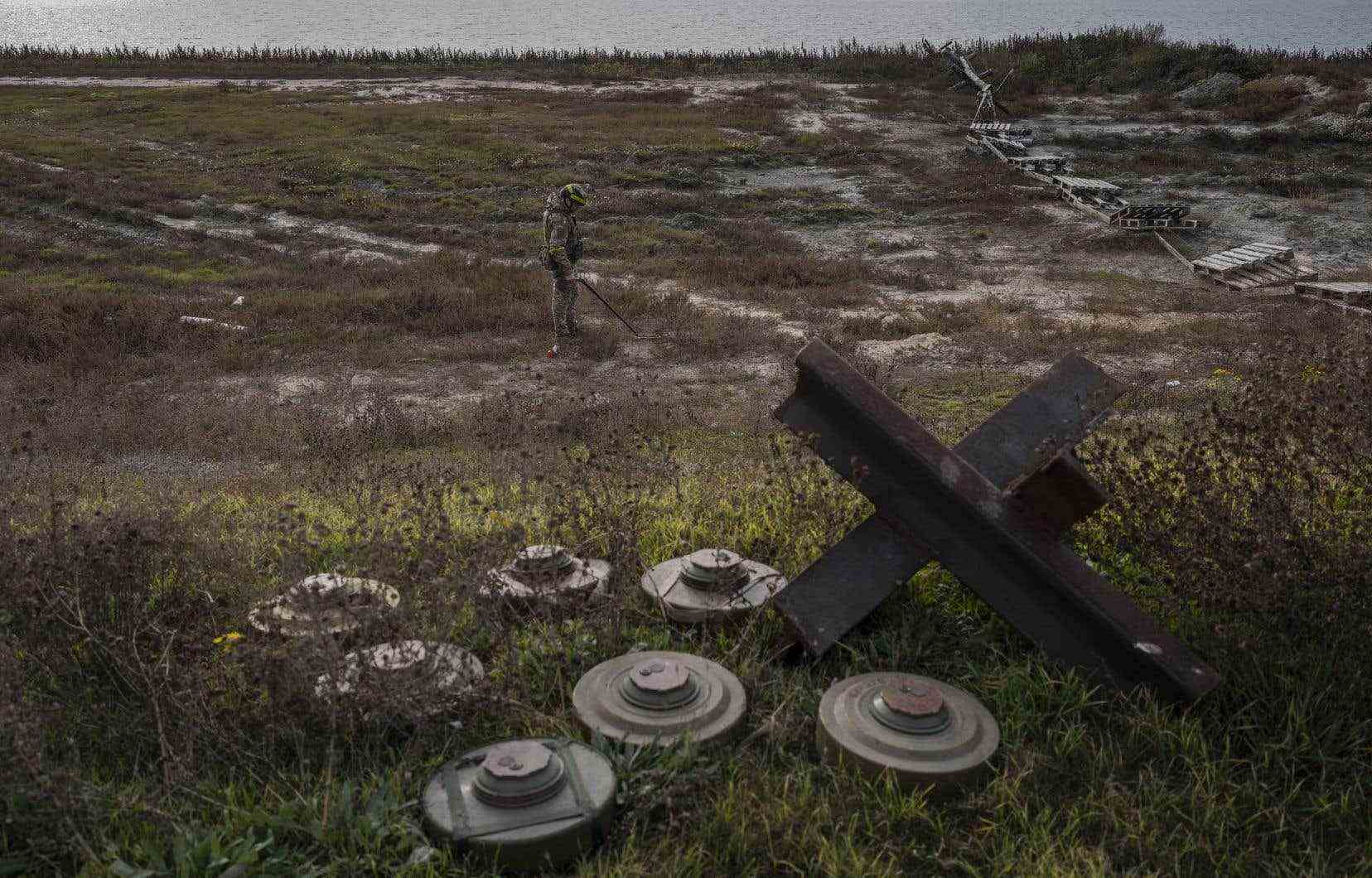A short path between rows of trees in the middle of a large, very flat field. We notice several small innocuous yellow stakes, but they are not.
Three explosions have been reported here, including a fatal one, which completely destroyed a military vehicle.
Each of the stakes indicates the location of an anti-tank mine found by the clearance teams.
We are an hour’s drive from kyiv city center in Peremoha. The Russians pushed their offensive so far and they withdrew on March 30, leaving behind them fields of anti-tank or anti-personnel mines, like everywhere they went in Ukraine.
These explosive devices have both a defensive vocation, but also prevent the use and occupation of the territory. There are millions of mines buried in Ukraine today, it is estimated.
The organization The HALO Trust, financed in particular by Canada to the tune of 2 million dollars, is working to demine Peremoha, meter by meter, but also in Chernihiv, in Soumi, and in other areas ravaged by the aggression. Russian.
It’s a cold morning where the air is crystal clear and we silently follow the supervisors walking along a very precise route, free of any explosive device.
All sorts of stakes of different coded colors delimit the zones, which first run along a trench dug by the Russians, at the exit of the village, behind a gas station.
All the work here is done by hand and on foot. An initial check should be made for any evidence of small hidden anti-personnel mines, ready to be triggered with a discrete trip wire, and brush cleared before undertaking “decontamination”, the removal of anti-tank mines.
“It’s beneficial for my homeland, to make the land safer,” said a young woman, Alla, who worked as a gardener doing pruning.
To detect anti-tank mines, a team employs a device that looks like a large rectangular frame surrounded by a cable connected to a metal detector.
It takes two people to move this frame above the ground, on a precise perimeter, as you go. In case of ringing, we investigate more precisely with another more common detector, with a handle.
“In the current context, it (demining) is probably the job most in demand in Ukraine”, commented a team leader, Danylo Kudriavtsev.
“You have to be well prepared psychologically and in good shape to do this job, you have to be very responsible,” explained the man who worked before the war in a company that produced glass.
If the team has detected an anti-tank mine, we will carefully dig it up. But it is not the organization that will take care of detonating it or defusing it. Only the army or the competent authorities can deal with this explosive, not a non-governmental organization.
The HALO Trust employs 98% Ukrainian staff, which allows more than 600 people to have a job, in this country where unemployment is high: many have lost their jobs because of the war.
The organization has perfected its methods of detecting minefields, in particular by using open sources, cross-referencing testimonies and reports from citizens.
However, there is a lot of “contamination”, especially around Kharkiv, a large eastern city recently liberated by the Ukrainians.
There are mines wherever there has been or still is fighting. Accidents are often reported, sometimes involving children intrigued by metal objects.
HALO has organized no less than 630 public awareness activities, but this is still not enough.
“People take risks, they think it’s not dangerous, often men, because they are interested in weapons,” said Olesia Fesenko, spokesperson for HALO.
If a person finds a mine in his garden, he can call the Ukrainian emergency services who will intervene.
But to rake portions of territory, the HALO Trust takes over since the Ukrainian state has many other fish to fry at the moment.
At a rate of a few hundred square meters a day, the HALO Trust has many more years to come.
